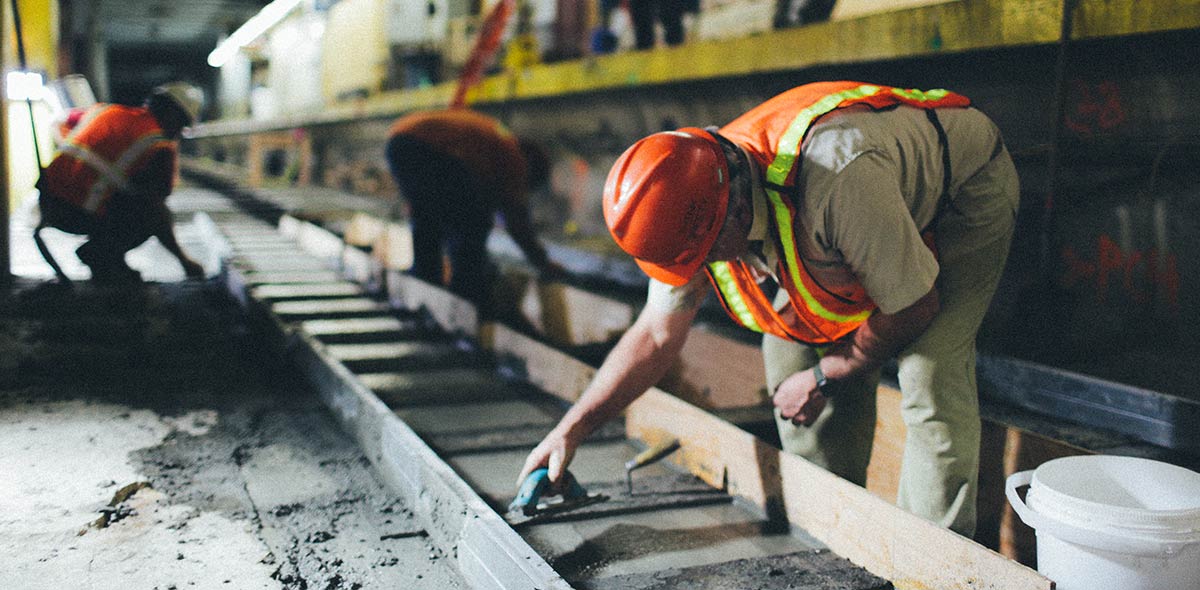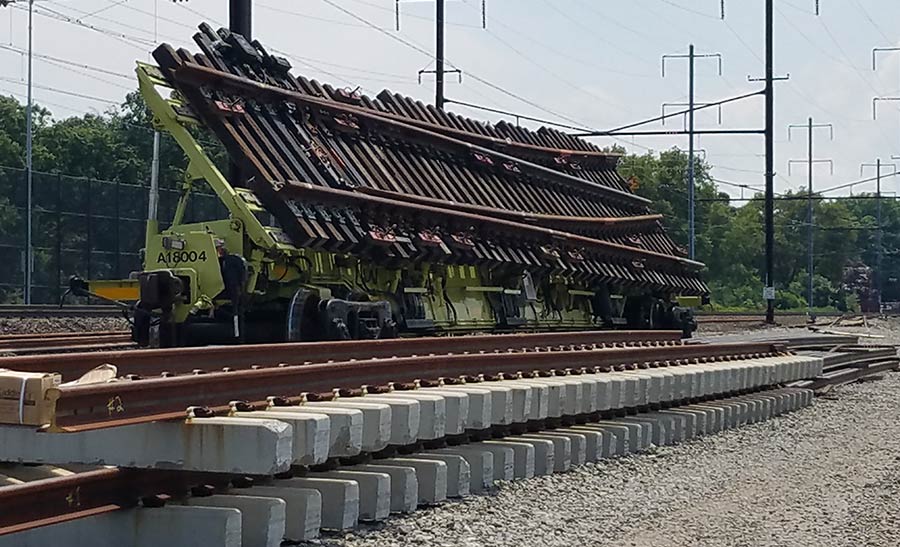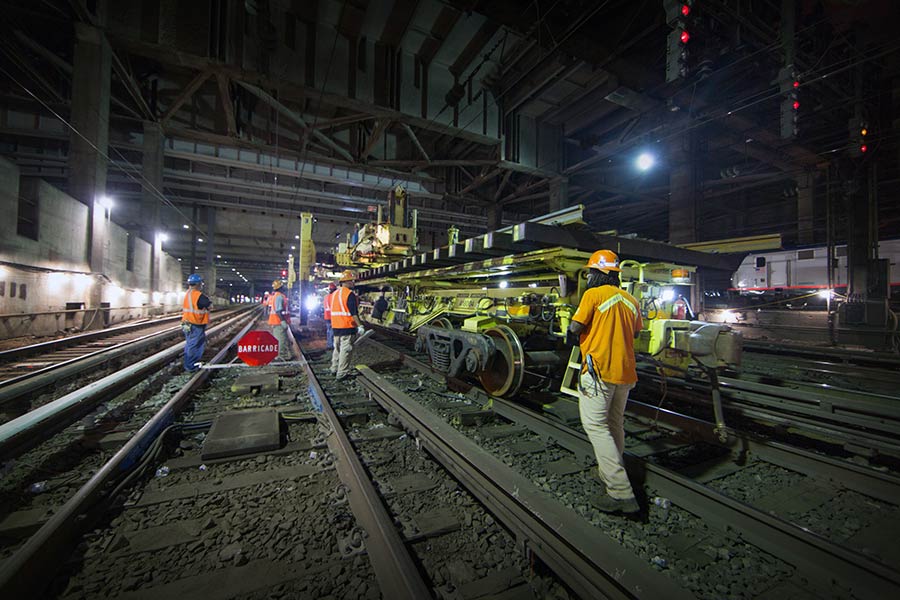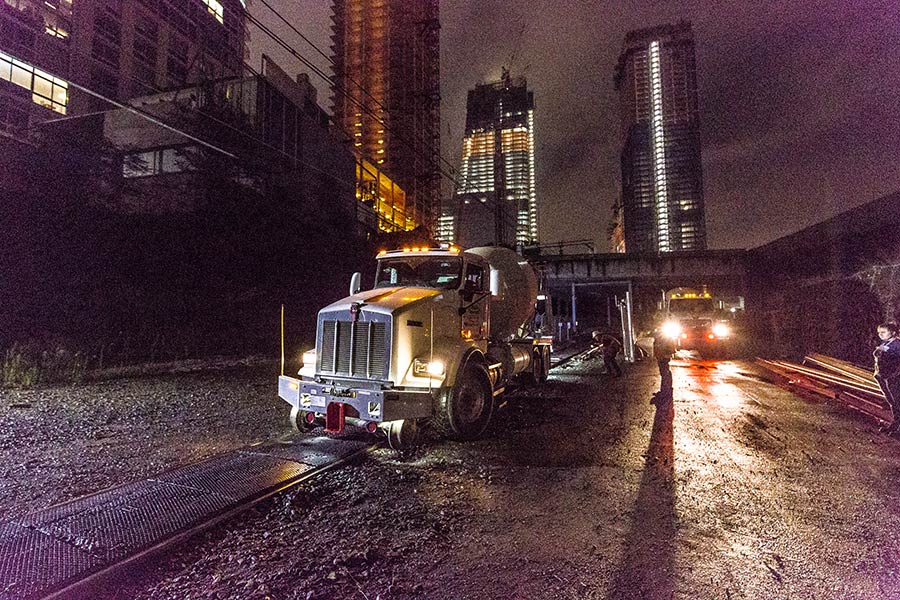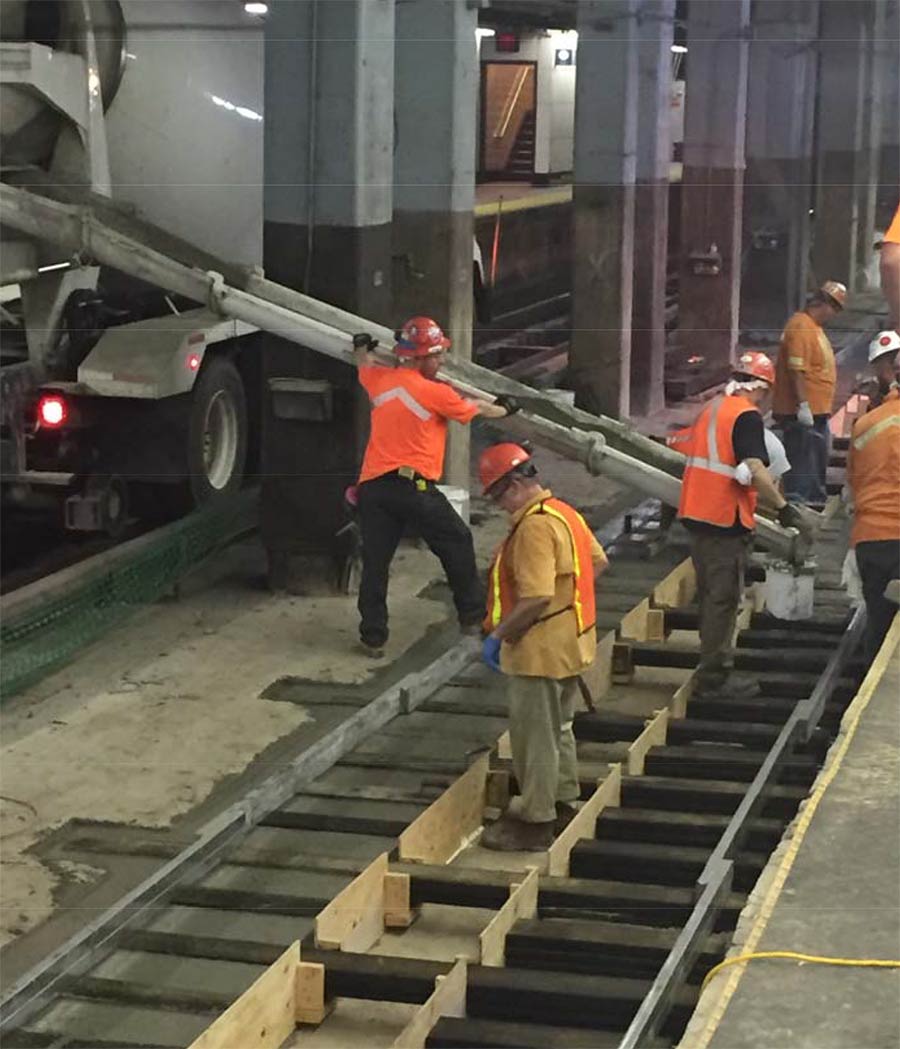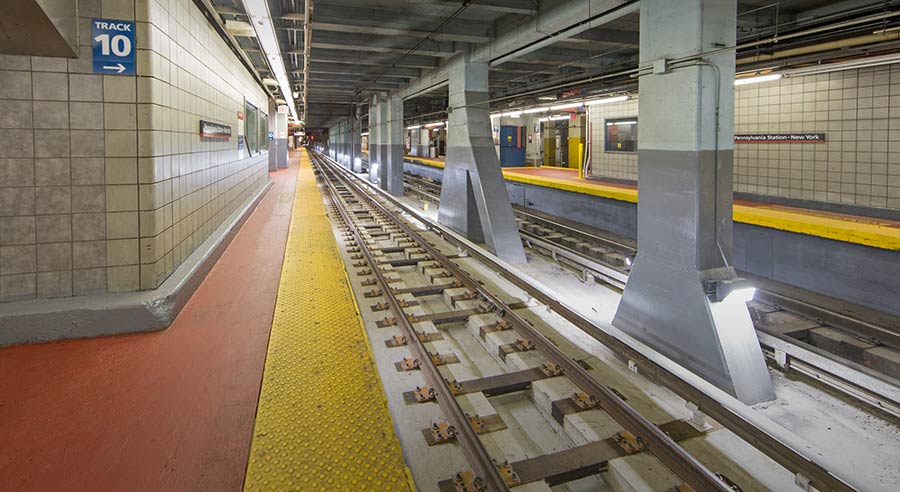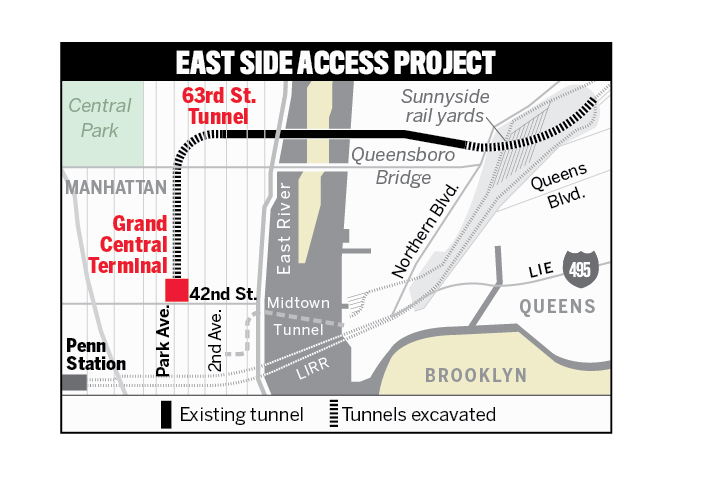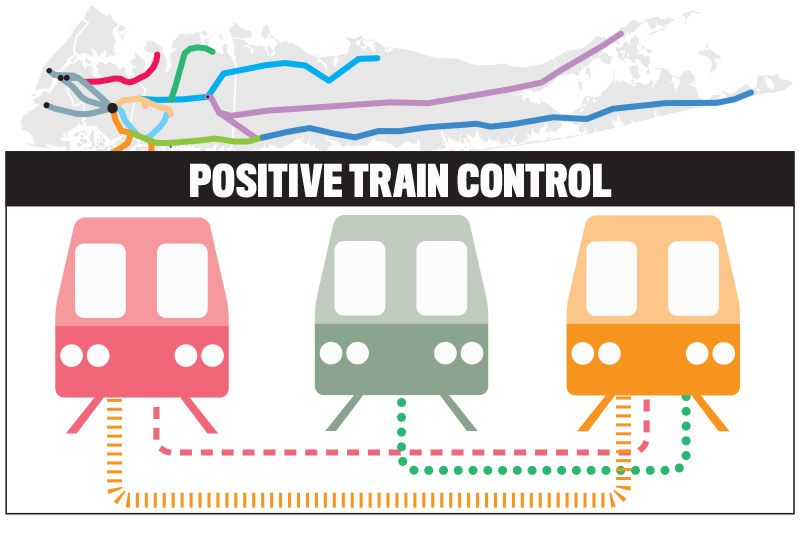Will it be a “Winter of Worry” and a “Spring of Service Disruptions” after the “Summer of Hell”?
The latest round of Amtrak infrastructure improvements at Penn Station begins Jan. 5; and while the public may not have the catchy nickname given to similar track work done over the summer, it does now have the details.
The LIRR released its service changes, effective Monday, Jan. 8, and expected to last until May 28. Overall, officials say the impact will be much less than it was over the summer, with eight of 184 rush hour trains to be rerouted, compared to 32 over the summer.
Here’s a line-by-line comparison of what’s expected to happen compared with the summer.
TRACKS OUT OF SERVICE
Winter: 1
Summer: 3 – 5
PERIOD OF WORK
Winter: 21 weeks
Summer: 8 weeks
RUSH-HOUR SERVICE AFFECTED
Winter: 5 percent
Summer: 20 percent
MORNING RUSH-HOUR TRAINS AFFECTED
Winter: 5
Summer: 15
To reduce the impact of the rerouted trains, the LIRR is adding two trains in the morning. It is also adding cars to five trains to increase seating capacity.
EVENING RUSH-HOUR TRAINS AFFECTED
Winter: 3
Summer: 17
To reduce the impact of the rerouted trains, the LIRR is adding three trains in the evening. In addition, two evening rush hour trains will be combined with alternative trains departing within 11 minutes and serving all affected stations.
TRAINS REROUTED THROUGH ALTERNATE STATIONS
Winter: Eight rush-hour trains that usually terminate or originate at Penn Station will be diverted to Atlantic Terminal in Brooklyn or Hunterspoint Avenue in Queens.
Summer: Twenty-three trains diverted to or from Atlantic Terminal, Hunterspoint Avenue or Jamaica in Queens.
AREAS OF PENN STATION AFFECTED
Winter: Tracks 15, 18, and a “turnout” — or an arrangement of rails and switches — at the eastern end of the tracks feeding the station.
Summer: “A” interlocking area, Track 10, plus tracks not typically used by the LIRR
ALTERNATE SERVICES PROVIDED
Winter: None
Summer: Ferries to and from Glen Cove; Buses from various locations on the Island; reduced fares for rerouted trains.
Here’s the full list of schedule changes:
BABYLON BRANCH
— The LIRR will add a new train departing Freeport at 5:43 a.m. and stopping at Baldwin, Rockville Centre and Jamaica and arriving at Penn Station at 6:24 a.m.
— The 6:56 a.m. train from Wantagh, which currently stops at Bellmore and Merrick before running express to Penn Station, will add a stop at Jamaica to allow for connecting service to Penn Station, then will continue to Atlantic Terminal, where it will arrive at 7:45 a.m.
— The LIRR will add two cars to the 7:35 a.m. train from Babylon making all stops to Seaford then running express to Jamaica and Penn Station. This train will be lengthened to 12 cars, from the usual 10, adding more than 200 extra seats.
— The 7:41 a.m. train from Merrick, which currently stops at Freeport and Baldwin before running express to Penn Station, will add a stop at Jamaica to allow customers to change for connecting service to Penn Station, then will continue to Hunterspoint Avenue, where it will arrive at 8:25 a.m.
— The 8:25 a.m. train from Freeport, which currently stops at Baldwin, Rockville Centre and Jamaica en route to Penn Station, will be rerouted to Atlantic Terminal, where it will arrive at 9:07 a.m. Connecting service is available at Jamaica.
— The LIRR will add two cars to the 4:34 p.m. train from Penn Station, running express to Seaford then making all stops to Babylon, lengthening the train to 12 cars from the usual 10, adding more than 200 extra seats.
— To provide a later departure time for customers using Hunterspoint Avenue and traveling on the Babylon, Hempstead, Long Beach and Ronkonkoma Branches, the LIRR will add a new train departing Hunterspoint Avenue at 7:02 p.m. and stopping at Rockville Centre and Baldwin en route to arriving at Freeport at 7:42 p.m. This train makes connections at Jamaica for trains bound for Babylon, Hempstead, Long Beach and Ronkonkoma.
FAR ROCKAWAY BRANCH
— The 8:10 a.m. train from Far Rockaway, which currently makes all local stops to Valley Stream, then Jamaica, Kew Gardens, Forest Hills and Penn Station, will be rerouted to Hunterspoint Avenue, where it will arrive at 9:04 a.m. This train will not stop at Kew Gardens or Forest Hills. Connecting service is available at Jamaica.
— The train that currently originates at 5:32 p.m. at Penn Station and terminates at Far Rockaway at 6:24 p.m., will instead originate at Jamaica at 5:52 p.m. Customers at Penn Station can connect with this train by boarding the 5:23 p.m. Long Beach Branch train or the 5:24 p.m. train to Freeport and changing at Jamaica.
HEMPSTEAD BRANCH
— The 5:38 p.m. train from Penn Station, due into Hempstead at 6:36 p.m., will originate at Atlantic Terminal at 5:47 p.m. Customers from Penn Station can connect with this train by boarding the 5:33 p.m. train to Hicksville and changing at Jamaica.
— The 7:05 p.m. train from Penn Station, due into Hempstead at 7:56 p.m., will originate at Atlantic Terminal at 7:10 p.m. Customers from Penn Station can connect with this train by boarding the 7:08 p.m. Babylon Branch train and changing at Jamaica.
LONG BEACH BRANCH
— The 8:03 a.m. train from Long Beach, making all local stops to Lynbrook before running express to Penn Station, will add a stop at Jamaica to allow for connecting service to Penn Station, then will continue to Atlantic Terminal, where it will arrive at 8:54 a.m.
— The LIRR will add two cars to the 8:08 a.m. train from Long Beach, making all local stops to Jamaica, then Woodside and Penn Station. The train will be lengthened to 12 cars from the usual 10, adding more than 200 seats.
PORT JEFFERSON BRANCH
— The 5:06 p.m. train from Penn Station, which runs express to Syosset then stops at Cold Spring Harbor and Huntington, will not operate. Customers will be able to board the 5:17 p.m. train from Penn Station, which runs express to Westbury, then stops at Hicksville, Syosset, Cold Spring Harbor and Huntington.
PORT WASHINGTON BRANCH
— The LIRR will add a new afternoon train departing Penn Station at 3:40 p.m., stopping at Woodside, then making all stops to Great Neck, where it will arrive at 4:15 p.m.
— The 5:50 p.m. train from Penn Station, which runs express to Bayside, then stops at Douglaston, Little Neck and Great Neck, will not operate. Customers will be able to board the 5:56 p.m. train from Penn Station, which makes all local stops to Great Neck. The 5:56 p.m. train will have four cars added, lengthening the train to 12 cars from the usual eight, adding more than 400 seats.
— The LIRR will add two cars to the 7:27 p.m. train from Penn Station, due into Port Washington at 8:04 p.m., lengthening the train to 12 cars from the usual 10, adding more than 200 seats.
RONKONKOMA BRANCH
— The LIRR will add a new early morning train departing Farmingdale at 5:05 a.m. making local stops along the Main Line, and arriving at Penn Station at 6 a.m.
— The LIRR will add a new early afternoon train departing Penn Station at 1:49 p.m., then stopping at Woodside, Jamaica, Mineola, Hicksville, Bethpage, and all stops to Ronkonkoma, where it will arrive at 3:07 p.m.

